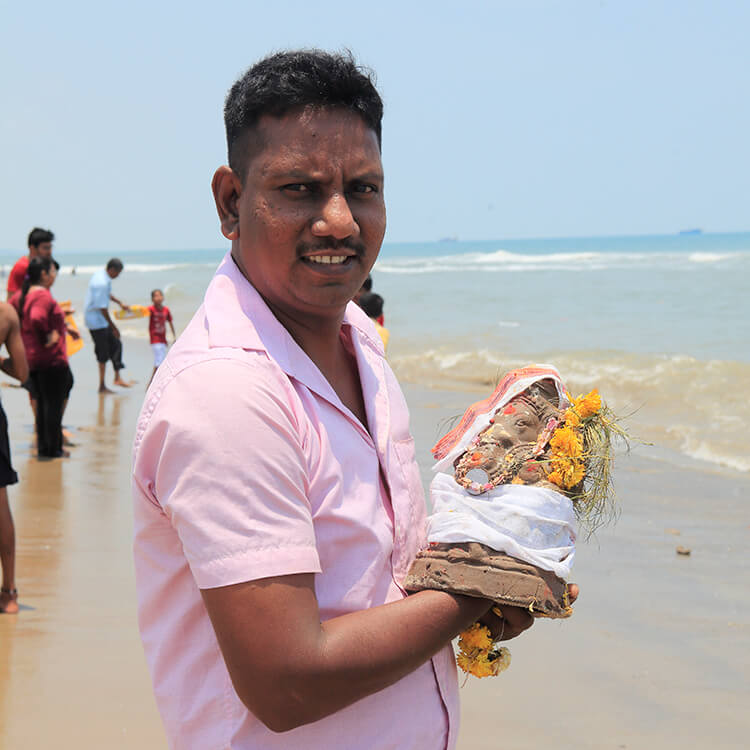Ganesh Chaturthi is an Indian festival during which Lord Ganesh, son of Shiva and Pârvatî, is worshipped.
It is also known as Vinayaka Chaturthi or Vinayaka Chavithi.
Portraits have been shoot at Pondicherry fishermen’s beach in Tamil Nadu South India
Lire plus / Read More
On the first day of the festival, individuals and families bring statues of Ganesha into their homes or place them on platforms under tents throughout communities. The statues are crafted from any number of materials including plaster of Paris. Some are carved from clay, chocolate, laddu, or paddy. The size and price of the likeness vary greatly. Once installed in the desired location, the ritual known as Pranapratishhtha Puja occurs. Priests invoke god’s presence into the likenesses by chanting mantras and offering prayers. The statues are also commonly anointed with chandan powder. In addition to public locations, the holy men also provide this service to private individuals if desired. Throughout the festivities, believers bring offerings of coconut, flowers, jaggery, traditional sweets, and coins. Prayers are offered by priests and citizens daily. When residents display the statues in their homes, Ganesha is regarded as an honored guest. Performing the rituals is also a means of asking god for his blessings. With the advent of technology, Hindus may send Ganesh Chaturthi prayers and blessings to friends and family members. Gift-giving is also not uncommon during the event.
On the last day of the festival, which is known as Ananta Chaturdasi, statues are paraded through the streets accompanied by singing and dancing. Arriving at the ocean, a specially constructed water tank, or other bodies of water, participants submerse the statues, which releases the entity and symbolically returns the materials back to the earth. Private residents may submerse their statues in buckets of water or use similar options.
















